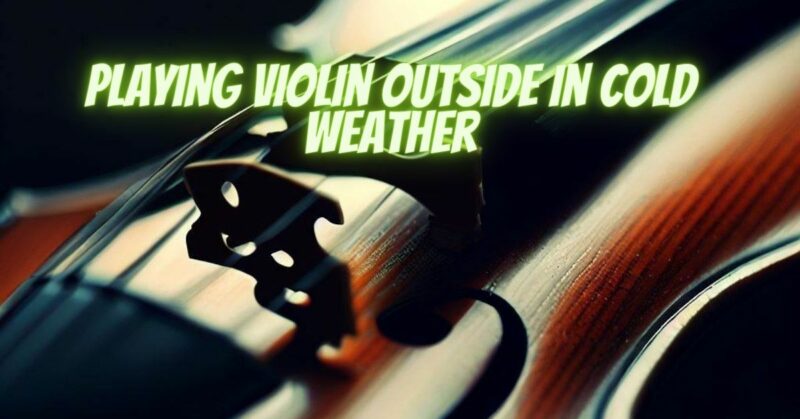Playing the violin outdoors can be a unique and enjoyable experience. However, when venturing into cold weather conditions, it is important to take precautions to protect your instrument and ensure your playing remains comfortable and safe. In this article, we will provide you with valuable tips for playing the violin outside in cold weather, allowing you to make the most of your outdoor practice sessions while keeping your instrument in optimal condition.
- Protect Your Violin:
a. Case Selection: Choose a well-insulated and sturdy violin case that provides adequate protection against temperature variations. Look for cases with thermal insulation or those specifically designed for outdoor use.
b. Temperature Adjustment: Allow your violin to acclimate to the outdoor temperature gradually. Avoid exposing it to extreme temperature changes too quickly, as this can cause the wood to contract or expand rapidly, potentially leading to damage.
c. Instrument Covers: Consider using a violin-specific cover or a soft cloth to further protect your instrument from direct exposure to cold air. This can help maintain a more stable temperature and prevent damage caused by sudden temperature shifts.
- Prepare Yourself:
a. Layer Your Clothing: Dress in layers to provide insulation and trap body heat. Opt for thermal undergarments, sweaters, and jackets to keep yourself warm while playing.
b. Hand Warmers: Use hand warmers or gloves designed specifically for musicians to keep your hands and fingers warm and maintain dexterity while playing. Ensure the gloves allow for proper finger movement and grip on the violin.
c. Warm-up Exercises: Prior to playing, engage in warm-up exercises to increase blood circulation and warm up your muscles. This can help prevent injuries and stiffness caused by the cold weather.
- Monitor Humidity Levels:
a. Humidification: Cold weather often brings dry air. Consider using a humidifier, such as a damp sponge or specialized instrument humidifiers, inside your violin case to maintain an optimal humidity level.
b. Hygrometer: Use a hygrometer to monitor the humidity levels both inside your case and the environment. Strive to keep the humidity within the recommended range of 40% to 60% to prevent excessive drying or swelling of the wood.
- Play Smart:
a. Shorter Sessions: Limit your playing time to shorter sessions in cold weather. Frequent breaks allow the instrument to rest and adjust to the temperature changes.
b. Avoid Moisture Exposure: Be mindful of any snow, rain, or moisture in the environment. Protect your violin from getting wet, as moisture can damage the wood and affect its tone and playability.
c. Post-Playing Care: After your outdoor practice, gently wipe down your violin with a soft, dry cloth to remove any moisture or condensation that may have accumulated.
Conclusion:
Playing the violin outside in cold weather can be a delightful experience, but it requires extra precautions to protect your instrument and ensure a comfortable playing session. By following the tips provided in this article, such as using a well-insulated case, dressing appropriately, monitoring humidity levels, and playing smart, you can enjoy playing your violin in the great outdoors while keeping your instrument in optimal condition. Remember, the well-being of your violin should always be a priority, so take the necessary measures to protect it from the potential risks associated with cold weather.

